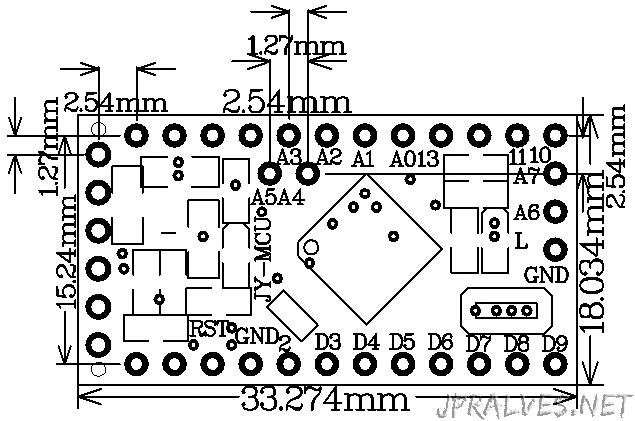Linux Get Memory Slot Info
We have a lot of servers. There are different type of vendors and products. Tracking them about theirs hardware is hard work. For example to get ram information by opening all cases of servers is impossible. Here comes Linux magic. Linux provides a lot of commands. We can use dmidecode like below.
dmidecode is very useful command which can provide information about hardware of the system. dmidecode will list a lot of information about CPU, Memory, Mainboard, Devices, Network etc. by default without providing any option. We will use --type 17 option in order to print detailed Memory or RAM information like below.
Linux Check Memory Slots, baixar poker brasil online, slotsskills tj, mobile casino free bonuses-Read our full review. Lucky247 Casino - Welcome Bonus Wager. Apr 07, 2018 As you can see, all you have to do is use the Linux cat command on a special file on your Linux system. (See below for sample processor output.) How to show Linux memory information. To see your Linux memory information and memory stats use this command: cat /proc/meminfo (See below for sample output.) Linux processor command output. Lspci is a utility for displaying information about PCI buses in the system and devices connected to them. By default, it shows a brief list of devices. Use the options described below to request either a more verbose output or output intended for parsing by other programs.
I want to get number of RAM slot (DIMM) and CPU socket of a PC in Linux. In Linux, there's a command dmidecode but this command must run with sudo/root permissions. Anyone can tell me another solution to get DIMM & CPU socket without using sudo/root permissions. I have a BL860c i2 server with HP-UX 11.31 running on it. I want to find out the no of DIMM slots in my servers, Memory module size etc. Is there any such command to get these information Also note that its tuckwila server so cstm doesnt work on it. Any help would be greatly appreciated!!
We can see that the system has 2048 MB RAM and multiple RAM slots.

As we have seen that dmidecode will print a lot of information about the RAM but if we want to strictly filter the RAM size we can use grep command like below by providing Size term.
Like RAM size we can also print the frequency of the RAM with grep command. As frequency is expressed with MHz we will provide Speed to the grep command.
Memory/RAM has physically different form factors. Currently DIMM or SODIMM is very popular. We can get this information with the following command.
Finding RAM size details in Linux for a System admin is very easy task. We can use free command to check how much RAM is present in our system. But when you want to find how many RAM/Memory sa lots are present in your system is bit tricky one. One way to do open your system and check what sa lots are there and how much RAM. Instead of doing this as a Hardware engineer we can use a command to check which sa lot is having below details.
- How much RAM
- Speed of the RAM
- Maximum RAM supported by that machine
- RAM location etc.
As you are already aware of dmidecode command to get all the system hardware info. We will use the same command for getting our RAM details.
To Find RAM details like maximum RAM, location of RAM etc we can use -t option with dmidecode as shown below
dmidecode -t 16
Output:
# dmidecode 2.11
SMBIOS 2.7 present.
Handle 0x000F, DMI type 16, 23 bytes
Physical Memory Array
Location: System Board Or Motherboard
Use: System Memory
Error Correction Type: None
Maximum Capacity: 16 GB
Error Information Handle: No Error
Number Of Devices: 2
If you see the above output we can figure it out how much maximum RAM this machine support, number of RAM devices and location etc.
To get actual RAM details such as how many sa lots, actual RAM present etc, use -t 17 option in dmidecode command
dmidecode -t 17

Output:
# dmidecode 2.11
SMBIOS 2.7 present.
Handle 0x0010, DMI type 17, 34 bytes
Memory Device
Array Handle: 0x000F
Error Information Handle: 0x0011
Total Width: 64 bit’s
Data Width: 64 bit’s
Size: 4096 MB
Form Factor: SODIMM
Set: None
Locator: DIMM0
Bank Locator: BANK 0
Type: DDR3
Type Detail: Synchronous
Speed: 1333 MHz
Manufacturer: Kingston
Serial Number: 4B29A74B
Asset Tag: 0123456789
Part Number: 99U5428-046.A00LF
Rank: Unknown
Configured Clock Speed: 1333 MHz
Handle 0x0013, DMI type 17, 34 bytes
Memory Device
Array Handle: 0x000F
Error Information Handle: 0x0014
Total Width: 64 bit’s
Data Width: 64 bit’s
Size: 4096 MB
Form Factor: SODIMM
Set: None
Locator: DIMM1
Bank Locator: BANK 2
Type: DDR3
Type Detail: Synchronous
Speed: 1333 MHz
Manufacturer: Kingston
Serial Number: 4729BF4B
Asset Tag: 0123456789
Part Number: 99U5428-046.A00LF
Rank: Unknown
Configured Clock Speed: 1333 MHz
If we want to see complete RAM details we can use -t memory option to get the details. Note this is a combination of 16 and 17 options
dmidecode -t memory
Output:
# dmidecode 2.11
SMBIOS 2.7 present.
Handle 0x000F, DMI type 16, 23 bytes
Physical Memory Array
Location: System Board Or Motherboard
Use: System Memory
Error Correction Type: None
Maximum Capacity: 16 GB
Error Information Handle: No Error
Number Of Devices: 2
Handle 0x0010, DMI type 17, 34 bytes
Memory Device
Array Handle: 0x000F
Error Information Handle: 0x0011
Total Width: 64 bit’s
Data Width: 64 bit’s
Size: 4096 MB
Form Factor: SODIMM
Set: None
Locator: DIMM0
Bank Locator: BANK 0
Type: DDR3
Type Detail: Synchronous
Speed: 1333 MHz
Manufacturer: Kingston
Serial Number: 4B29A74B
Asset Tag: 0123456789
Part Number: 99U5428-046.A00LF
Rank: Unknown
Configured Clock Speed: 1333 MHz
Handle 0x0013, DMI type 17, 34 bytes
Memory Device
Array Handle: 0x000F
Error Information Handle: 0x0014
Total Width: 64 bit’s
Data Width: 64 bit’s
Size: 4096 MB
Form Factor: SODIMM
Set: None
Locator: DIMM1
Bank Locator: BANK 2
Type: DDR3
Type Detail: Synchronous
Speed: 1333 MHz
Manufacturer: Kingston
Serial Number: 4729BF4B
Asset Tag: 0123456789
Part Number: 99U5428-046.A00LF
Rank: Unknown
Configured Clock Speed: 1333 MHz
Some of the valid keywords/types you can use and find different details are as follows.

bios
system
baseboard
chassis
processor
memory
cache
connector
sa lot
We can even use lshw command to get RAM/Memory details as well Cache details such as L1, L2 and L3 levels.
lshw -class memory
Memory Slot Meaning

Linux Get Memory Slot Info Free
*-firmware
description: BIOS
vendor: Hewlett-Packard
physical id: 0
version: F.22
date: 07/27/2011
size: 1MiB
capacity: 2496KiB
capabilities: pci upgrade shadowing cdboot bootselect edd int13floppynec int13floppytoshiba int13floppy360 int13floppy1200 int13floppy720 int13floppy2880 int9keyboard int10video acpi usb biosbootspecification uefi
*-memory
description: System Memory
physical id: f
sa lot: System board or motherboard
size: 8GiB
*-bank:0
description: SODIMM DDR3 Synchronous 1333 MHz (0.8 ns)
product: 99U5428-046.A00LF
vendor: Kingston
physical id: 0
serial: 4B29A74B
sa lot: DIMM0
size: 4GiB
width: 64 bit’s
clock: 1333MHz (0.8ns)
*-bank:1
description: SODIMM DDR3 Synchronous 1333 MHz (0.8 ns)
product: 99U5428-046.A00LF
vendor: Kingston
physical id: 1
serial: 4729BF4B
sa lot: DIMM1
size: 4GiB
width: 64 bit’s
clock: 1333MHz (0.8ns)
*-cache:0
description: L1 cache
physical id: 1c
sa lot: L1 Cache
size: 32KiB
capacity: 32KiB
capabilities: synchronous internal write-through instruction
*-cache:1
description: L2 cache
physical id: 1d
sa lot: L2 Cache
size: 256KiB
capacity: 256KiB
capabilities: synchronous internal write-through unified
*-cache:2
description: L3 cache
physical id: 1e
sa lot: L3 Cache
size: 3MiB
capacity: 3MiB
capabilities: synchronous internal write-through unified
*-cache
description: L1 cache
physical id: 1b
sa lot: L1 Cache
size: 32KiB
capacity: 32KiB
capabilities: synchronous internal write-through data
Do let us know if there is any way to find RAM sa lot details.
The following two tabs change content below.Linux Get Memory Slot Info Software
- Docker: How to copy files to/from docker container - June 30, 2020
- Anisble: ERROR! unexpected parameter type in action:
Fix - June 29, 2020 - FREE: JOIN OUR DEVOPS TELEGRAM GROUPS - August 2, 2019
- Review: Whizlabs Practice Tests for AWS Certified Solutions Architect Professional (CSAP) - August 27, 2018
- How to use ohai/chef-shell to get node attributes - July 19, 2018